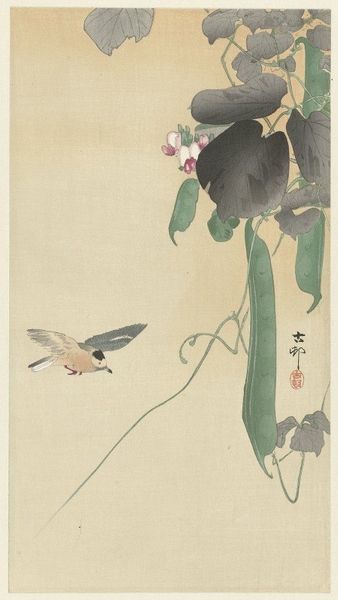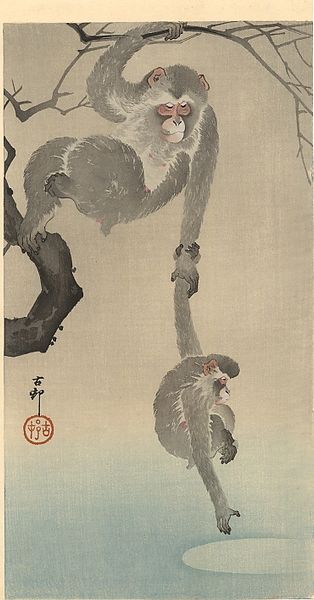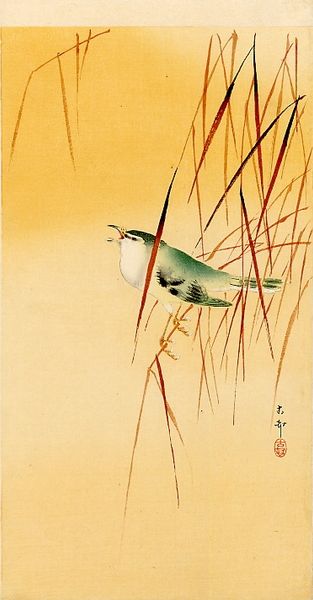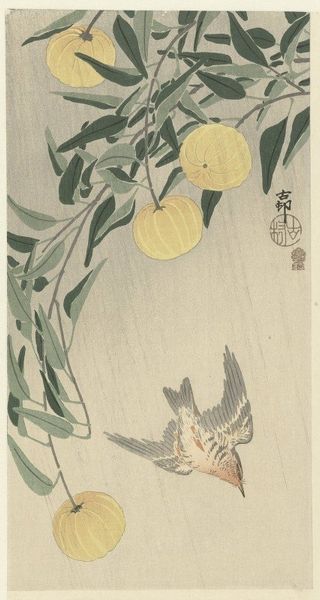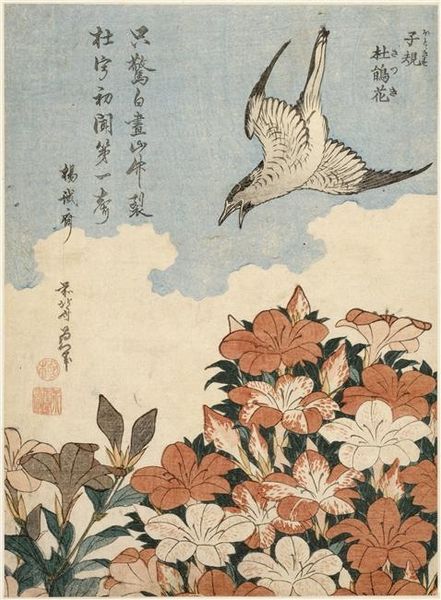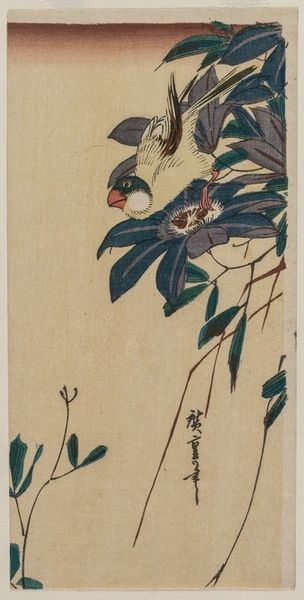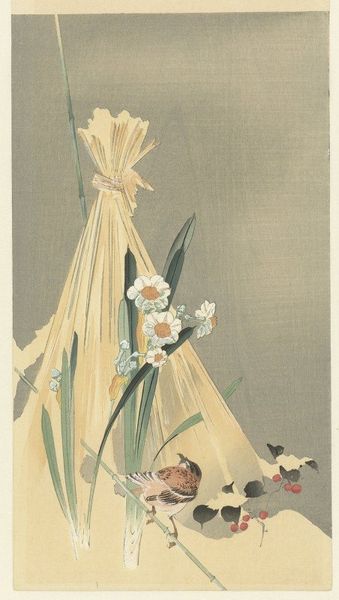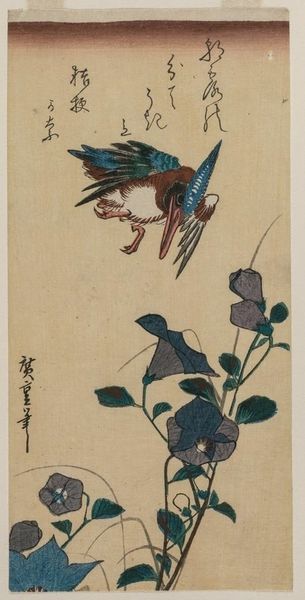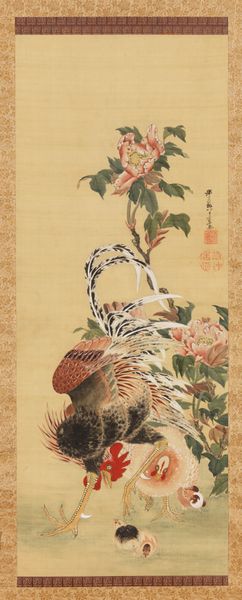
print, woodblock-print
# print
#
impressionism
#
asian-art
#
bird
#
botanical illustration
#
ukiyo-e
#
woodblock-print
#
plant
#
orientalism
#
line
#
botanical art
#
watercolor
Copyright: Public domain
Curator: Allow me to introduce “Wheatear and Bamboo,” a woodblock print attributed to Ohara Koson. Its date remains unknown, an unfortunate gap in our records. Editor: My initial response is one of peacefulness. There's a stillness evoked by the muted palette and the elegant lines. It's remarkably serene, even contemplative. Curator: Contemplative, a fitting descriptor. The composition strikes me as quite intentional. Notice the interplay between the positive and negative space. The bamboo leaves, rendered with such detail, provide a complex backdrop against the blank canvas. The print skillfully guides the viewer’s gaze. The wheatear draws the eye downward, anchoring the piece, doesn't it? Editor: Indeed. Structurally, I'm also intrigued by the way Koson utilizes the line. The bamboo leaves are meticulously outlined, but observe how he varies the thickness to create depth and shadow. What strikes you about its cultural significance? Curator: Woodblock printing holds a revered place in the history of Japanese art, especially in ukiyo-e traditions, celebrating scenes of everyday life and nature. This piece reflects that ethos, inviting the viewer to connect with the natural world. What societal factors may have affected its message, production and accessibility? Editor: Considering that during much of its likely production period, from the late 19th to the early 20th century, Japan was rapidly modernizing and opening to the West. Ukiyo-e prints, though seemingly traditional, also served as commodities within a changing cultural landscape. What of the bird, symbolically? Curator: The wheatear is not merely an aesthetic element but a symbol of transition and migration in many cultures. Is the painting portraying the transformation of this bird symbolically? In any case, consider its placement; the bird perches precariously, head bowed—perhaps reflecting the anxieties of the time. The muted color palette heightens this interpretation. The cool greens and browns, together with a beige backdrop, suggest tranquility and caution. Editor: True, the very act of portraying such delicate imagery as popular art granted the working classes access to sophisticated themes and social critique—perhaps sparking intellectual curiosity within those communities. This is quite interesting and gives a fresh new perspective to this composition. Curator: Yes, examining it more closely, the interplay between form and context is compelling and reveals new insight.
Comments
No comments
Be the first to comment and join the conversation on the ultimate creative platform.
